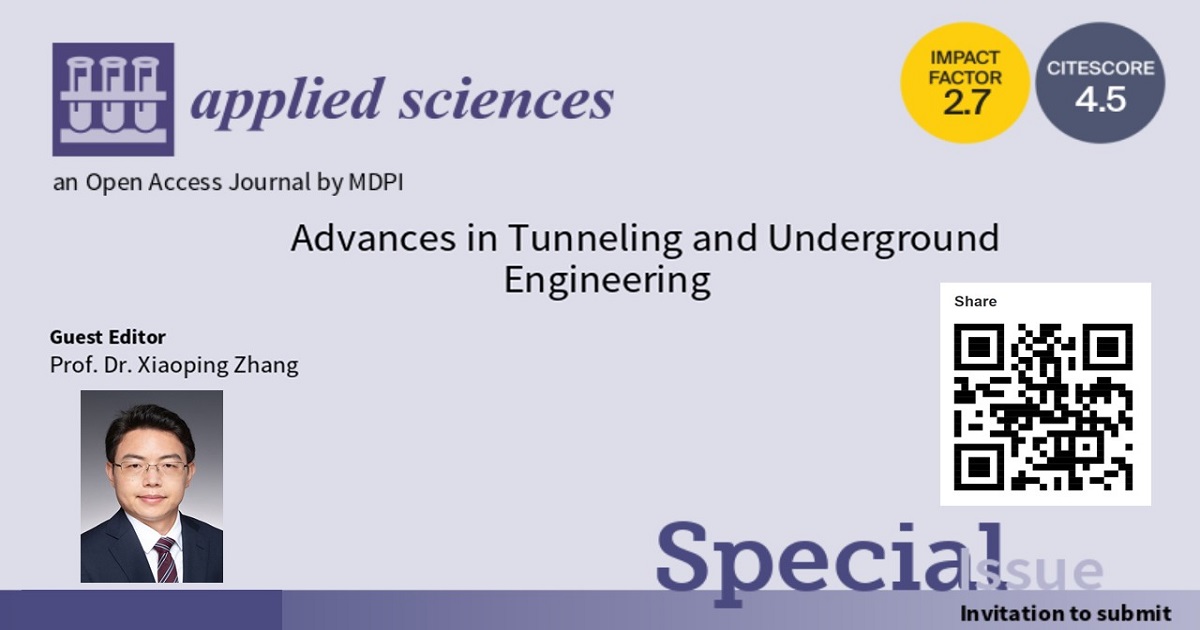Advances in Tunneling and Underground Engineering
A special issue of Applied Sciences (ISSN 2076-3417). This special issue belongs to the section "Civil Engineering".
Deadline for manuscript submissions: 20 September 2024 | Viewed by 15596

Special Issue Editor
Interests: underground engineering; engineering geology; rock and soil mechanics; rock stability control; tool-rock interaction; cracking processes in rock and soil materials; DEM simulation
Special Issue Information
Dear Colleagues,
Tunneling and underground engineering is critically important for underground development in cities, highway/railway construction in mountainous areas, water diversion tunnel excavation for water-deficient areas, etc. This Special Issue is committed to publishing papers on the interdisciplinary aspects of planning, creating, and regulating underground space, and covers a very wide scope of underground space and underground construction, including:
- Geo-investigation, geomechanics analysis, design and modeling, construction and monitoring, and maintenance and rehabilitation of tunnels and large underground and earth-sheltered structures.
- Planning, development, and operation of underground space and underground space environment such as architecture, safety and comfort, and human-space interaction.
- Installation and rehabilitation of underground pipelines, ducts, and cables using pipe jacking, microtunnelling, and other forms of trenchless technologies.
All papers within the topic of tunneling and underground engineering are welcomed. Papers can be in the form of original research papers or case study papers on underground space utilization and underground construction technology.
Prof. Dr. Xiaoping Zhang
Guest Editor
Manuscript Submission Information
Manuscripts should be submitted online at www.mdpi.com by registering and logging in to this website. Once you are registered, click here to go to the submission form. Manuscripts can be submitted until the deadline. All submissions that pass pre-check are peer-reviewed. Accepted papers will be published continuously in the journal (as soon as accepted) and will be listed together on the special issue website. Research articles, review articles as well as short communications are invited. For planned papers, a title and short abstract (about 100 words) can be sent to the Editorial Office for announcement on this website.
Submitted manuscripts should not have been published previously, nor be under consideration for publication elsewhere (except conference proceedings papers). All manuscripts are thoroughly refereed through a single-blind peer-review process. A guide for authors and other relevant information for submission of manuscripts is available on the Instructions for Authors page. Applied Sciences is an international peer-reviewed open access semimonthly journal published by MDPI.
Please visit the Instructions for Authors page before submitting a manuscript. The Article Processing Charge (APC) for publication in this open access journal is 2400 CHF (Swiss Francs). Submitted papers should be well formatted and use good English. Authors may use MDPI's English editing service prior to publication or during author revisions.
Keywords
- tunnel excavation
- advanced detection
- development and utilization of underground space
- trenchless technology
- tunnel boring machine
- rock and soil
- ancient underground engineering





